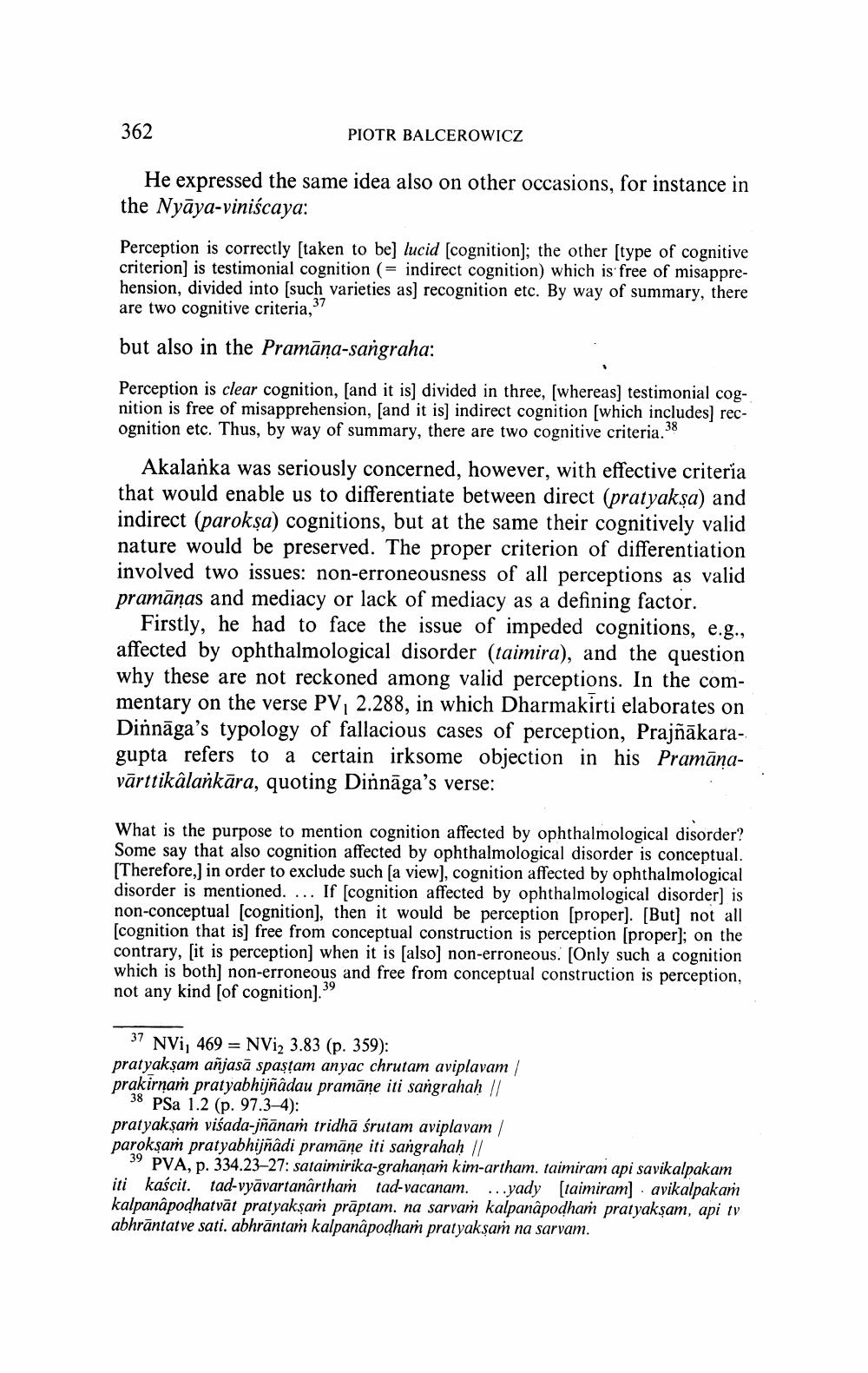________________
362
PIOTR BALCEROWICZ
He expressed the same idea also on other occasions, for instance in the Nyaya-viniścaya:
Perception is correctly [taken to be] lucid [cognition]; the other [type of cognitive criterion] is testimonial cognition (= indirect cognition) which is free of misapprehension, divided into [such varieties as] recognition etc. By way of summary, there are two cognitive criteria,3
but also in the Pramana-sangraha:
Perception is clear cognition, [and it is] divided in three, [whereas] testimonial cognition is free of misapprehension, [and it is] indirect cognition [which includes] recognition etc. Thus, by way of summary, there are two cognitive criteria. 38
Akalanka was seriously concerned, however, with effective criteria that would enable us to differentiate between direct (pratyakṣa) and indirect (paroksa) cognitions, but at the same their cognitively valid nature would be preserved. The proper criterion of differentiation involved two issues: non-erroneousness of all perceptions as valid pramānas and mediacy or lack of mediacy as a defining factor.
Firstly, he had to face the issue of impeded cognitions, e.g., affected by ophthalmological disorder (taimira), and the question why these are not reckoned among valid perceptions. In the commentary on the verse PV, 2.288, in which Dharmakirti elaborates on Dinnaga's typology of fallacious cases of perception, Prajñākaragupta refers to a certain irksome objection in his Pramanavārttikâlankara, quoting Dinnaga's verse:
What is the purpose to mention cognition affected by ophthalmological disorder? Some say that also cognition affected by ophthalmological disorder is conceptual. [Therefore,] in order to exclude such [a view], cognition affected by ophthalmological disorder is mentioned. ... If [cognition affected by ophthalmological disorder] is non-conceptual [cognition], then it would be perception [proper]. [But] not all [cognition that is] free from conceptual construction is perception [proper]; on the contrary, [it is perception] when it is [also] non-erroneous. [Only such a cognition which is both] non-erroneous and free from conceptual construction is perception, not any kind [of cognition].39
37 NVi, 469 NVi2 3.83 (p. 359):
pratyakşam anjasă spaṣṭam anyac chrutam aviplavam / prakirnam pratyabhijñâdau pramane iti sangrahah ||
38 PSa 1.2 (p. 97.3-4):
pratyakşam visada-jñānam tridhā śrutam aviplavam paroksam pratyabhijñâdi pramane iti sangrahaḥ ||
39 PVA, p. 334.23-27: sataimirika-grahanam kim-artham. taimiram api savikalpakam iti kaścit. tad-vyavartanârtham tad-vacanam. ...yady [taimiram] avikalpakam kalpanapoḍhatvāt pratyakṣam prāptam. na sarvaṁ kalpanâpodhaṁ pratyakşam, api tv abhrantatve sati. abhrāntam kalpanapoḍham pratyakṣam na sarvam.




